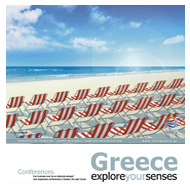|
Central Greece is a place of amazing diversity, ideal for holidays all year round. Seaside towns for "fishmeze" and lovely swimming. Refuges up in the mountains, skiing on snowy slopes, rafting and climbing. Picturesque Galaxidi, thick wooded Karpenisi, Delphi of the famous Oracle, legendary Thermopyles, idyllic Nafpactos, snowy Parnassos, Evia, the second largest island in Greece. Abundance of scenic landscapes, well-developed tourist resorts and well-equipped ski centres offer infinite opportunities to ensure a most pleasant stay winter and summer.
The beautiful island of Evia is the second largest island in Greece after Crete. Evia stretches over the Aegean Sea to the east of Mainland Greece, alongside the shores of the prefectures of Fthiotida, Viotia and Attica separated form them by the Gulf of Eubea.
The name Evia, allegedly given by Homer, expresses the fertile terrain and developed cow breeding, for which the island was renowned. It is a land of scenic contrasts, fascinating the visitor at every turn: wooded mountainsides, crenellated beaches, fertile valleys, rugged seascapes. The west coastline of the island is sheltered and ideal for water sports. In contrast, untamed beauty dominates on the eastern shore line ending up at the usually stormy cape of Kafireas, at the SE tip of the island, opposite Andros. There are high thickly wooded mountains and stretches of valleys. The island is also endowed with the peculiar tidal current of the narrow Evripos strait.
In the prefecture of Evia you can find numerous historic monuments, endless natural charms, superb beaches, and interesting tourist destinations that are really worth visiting. A unique atmosphere, with tradition and modernity side by side, offers holidays adapted to the likes of everyone.
Evia is easily accessible from a fork on the National Athens-Lamia Road and is connected with Mainland Greece by a swing bridge.
The prefecture is scattered all over with archaeological finds, indicating continuous habitation of Evia reaching as far back as the Paleolithic period.
The first settlers of Evia were the Ions, the Achaeans, the Aeoles ,and the Dorians. Evia was involved in the most important wars in ancient times starting with the expedition to Troy to the Persian Wars. It was dominated by the Macedonians and like the rest of the Greek regions it underwent the usual Roman, Frankish, Turkish period. Evia took part energetically in the revolution of 1821 against the Turks and became part of the independent Greek State on July 13, 1830.
The prefecture of Viotia borders to the south with the prefecture of Attica, to the north with the prefecture of Fthiotida and Fokida, to the east it is washed by the Eubean Gulf and to the west by the Korinthian Gulf.
Scenic contrasts, natural beauty, cultural monuments, and the traditional colour of the region are some of the characteristics that make up the picture of the prefecture. The Eubean coasts, the beaches in the Corinth Gulf (Agios Isidoros, Aliki, Saranti, Agios Vasilios, Livadostra, Zaltsa, Agios Nikolaos), dense vegetation, picturesque villages, Mt Parnassos and interesting archaeological sites (Orhomenos, Haeronia, Plateas) ensure a most pleasant stay both in winter and summer.
|






